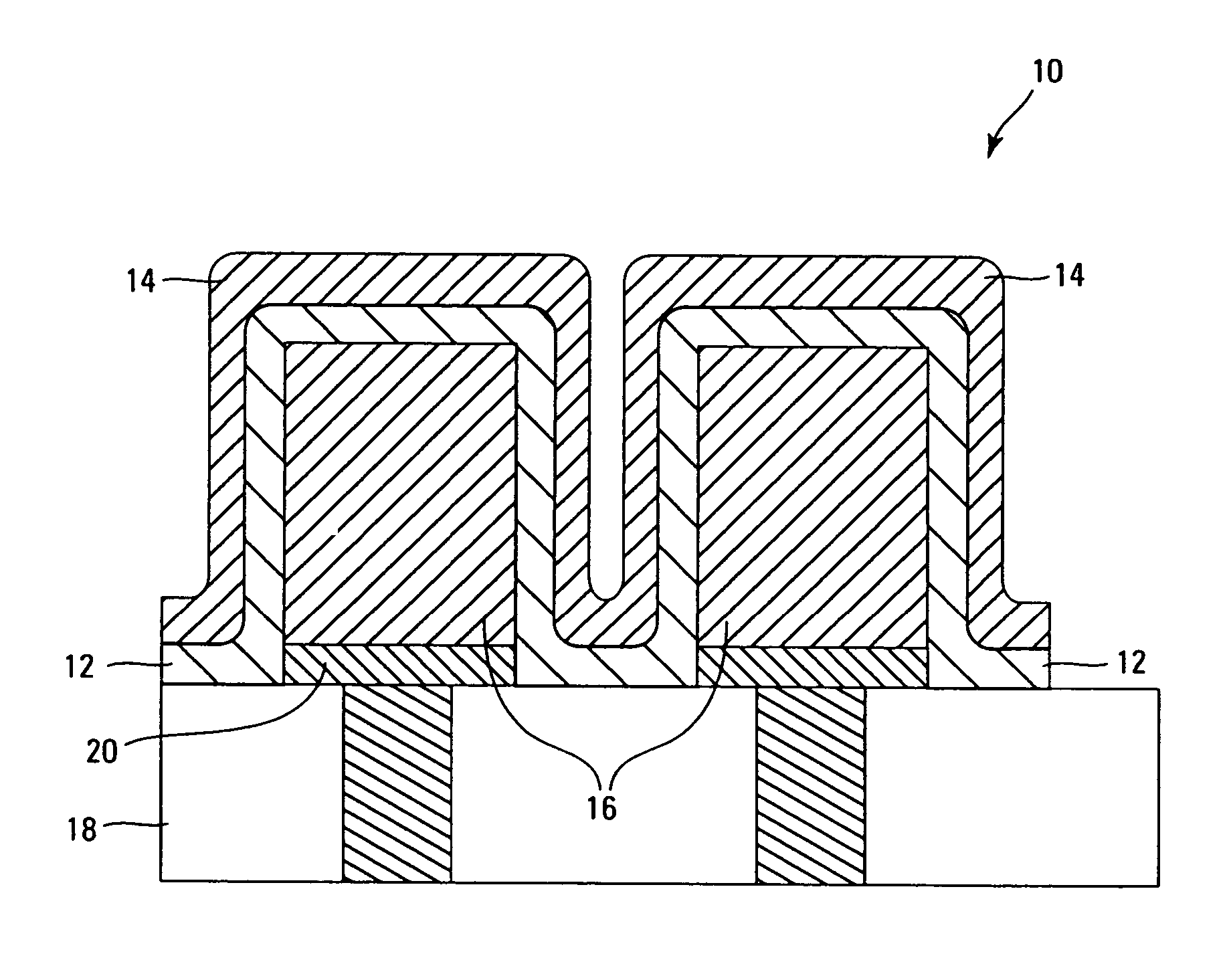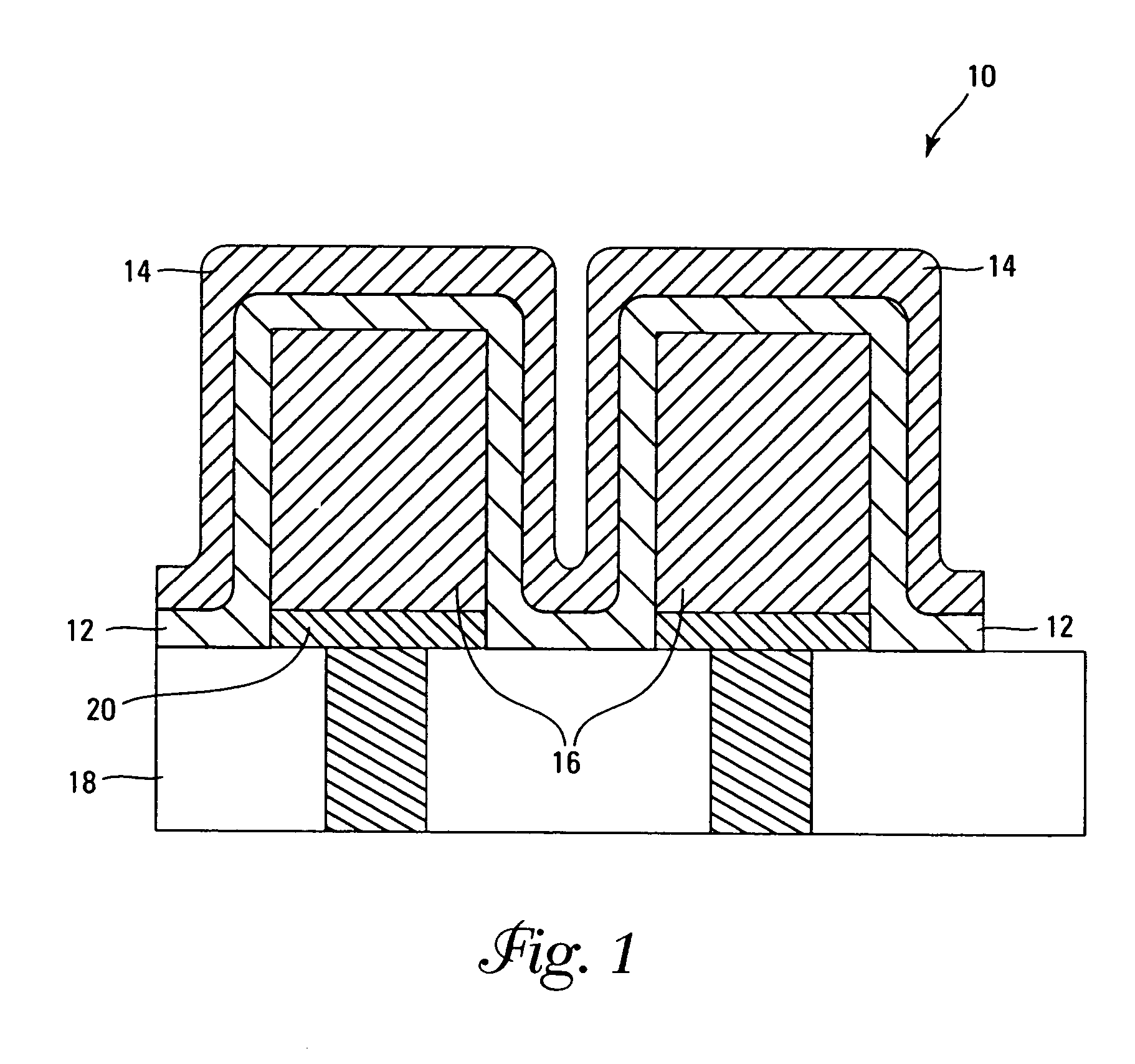Systems and methods for forming strontium- and/or barium-containing layers
a technology of strontium and barium, applied in the direction of polycrystalline material growth, crystal growth process, chemically reactive gas, etc., can solve the problems of reducing the conformality of the layer, and reducing the efficiency of the layer. , to achieve the effect of minimizing the detrimental gas phase reaction and improving the control of the thickness of the layer
- Summary
- Abstract
- Description
- Claims
- Application Information
AI Technical Summary
Benefits of technology
Problems solved by technology
Method used
Image
Examples
example 1
Atomic Layer Deposition of SrTiO3
[0062]Separate reservoirs of the compounds Sr[N(SiMe3)2]2 and titanium isopropoxide are attached to a vapor deposition chamber and heated to 130° C. and 45° C., respectively. Lines and valves connecting the reservoirs to the chamber are maintained 20° C. above the reservoir temperature The Sr[N(SiMe3)2]2 remains solid; subliming into the vapor phase. The titanium source is a liquid with reasonable vapor pressure under these conditions. The substrate is a silicon wafer which has been processed up to the bottom electrode of the capacitor. The substrate is on a heated stage held at 300° C. The chamber is pumped down to a base pressure of 10−5 torr before the ALD cycles are initiated and remains under dynamic vacuum for the duration of the deposition. The precursors are pulsed into the chamber using pneumatic actuated valves under computer control. A Sr-source pulse of 1 second is followed by a 1-second purge gas pulse of argon followed by a 3-second pu...
example 2
Atomic Layer Deposition of (Ba,Sr)TiO3
[0063]The deposition is carried out in a fashion similar to that described in Example 1. An additional reservoir of Ba[N(SiMe3)2]2 is connected to the chamber and heated to 160° C. The pulse sequence described above for SrTiO3 is used except that every other pulse of the Sr-source is replaced by a Ba-source pulse. The film can also be made richer in either Sr or Ba by using more pulses of the desired precursor in the total number of pulses.
PUM
| Property | Measurement | Unit |
|---|---|---|
| Thickness | aaaaa | aaaaa |
| Dielectric polarization enthalpy | aaaaa | aaaaa |
| Semiconductor properties | aaaaa | aaaaa |
Abstract
Description
Claims
Application Information
 Login to View More
Login to View More - R&D
- Intellectual Property
- Life Sciences
- Materials
- Tech Scout
- Unparalleled Data Quality
- Higher Quality Content
- 60% Fewer Hallucinations
Browse by: Latest US Patents, China's latest patents, Technical Efficacy Thesaurus, Application Domain, Technology Topic, Popular Technical Reports.
© 2025 PatSnap. All rights reserved.Legal|Privacy policy|Modern Slavery Act Transparency Statement|Sitemap|About US| Contact US: help@patsnap.com



